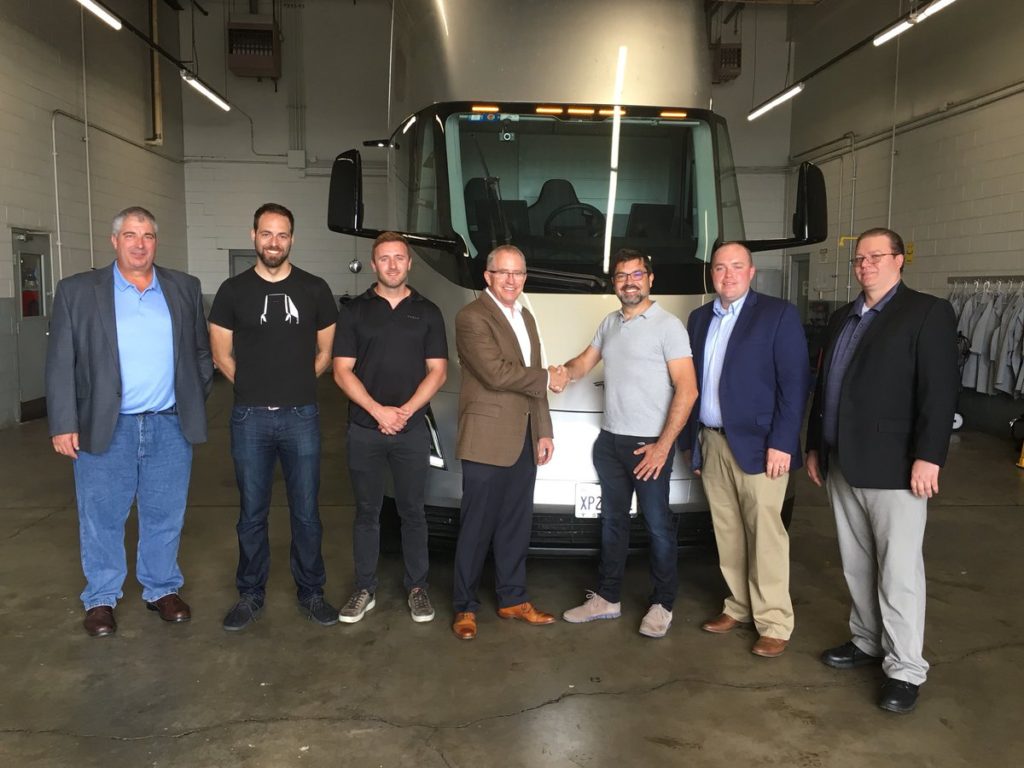
When Elon Musk unveiled the Tesla Semi last November, the bold CEO announced that the all-electric truck would likely start production sometime in 2019. While details for Tesla’s ramp for the Semi are still largely unknown, the company has nonetheless provided an update on the upcoming vehicle’s rollout, stating that the company would begin “earnestly” producing the Semi by 2020.
The update on the Semi’s production was shared by Eric Markowitz & Dan Crowley of Worm Capital, one of Tesla’s investors which currently owns about $200 million worth of TSLA stock. The Worm Capital financial analysts were part of a group who were invited to tour Tesla’s Gigafactory 1 in Nevada last month. Markowitz and Crowley wrote about their insights from the Giga 1 tour in a post on the financial firm’s official website. Among these were information related by Tesla head of investor relations Martin Viecha, who dropped some updates about the company’s products and its plans for the near future.
For one, the Tesla head of investor relations reportedly noted that the company is aiming to start exporting the Model 3 to other countries sometime next year. What’s more, Veicha also noted that Tesla is planning on “earnestly” producing the Semi by 2020.
The update on the Semi’s production appears to suggest that Tesla is, for the most part, keeping its original target for the long-hauler’s initial rollout. Musk’s 2019 estimate for the start of the Semi’s production is undoubtedly aggressive and optimistic, but if Tesla intends to hit its stride with the Semi’s production by 2020, the company would probably need to start manufacturing the first electric trucks either in 2019 (within Musk’s original target), or early 2020 (if the vehicle’s rollout ends up happening in Tesla’s ever-prevalent ‘Elon Time’).
Tesla’s goal for the Semi is actually quite feasible, considering that the vehicle shares several components with the Model 3. This was confirmed during the Q2 2018 earnings call, when the company noted that the two vehicles share parts such as powertrains, door handles, and touchscreens, to name a few. On account of these similarities, as well as the manufacturing lessons Tesla learned during the Model 3 ramp, there is a pretty good chance that the Semi’s production would not see as many difficulties as the electric sedan’s.
In true Tesla fashion, the Semi boasts strong performance figures, thanks to its four Model 3-derived electric motors that enable the long-hauler to sprint from 0-60 mph in just 5 seconds without cargo. The Semi is also classified as a Class 8 vehicle, allowing it to transport the maximum amount of load usually permitted on US highways. Furthermore, the electric truck will be capable of operating in “Convoy Mode,” a system that will enable several Semis to semi-autonomously draft in close proximity with each other to reduce energy usage from wind resistance.
Tesla is currently continuing real-world tests of the Semi, with the long-hauler’s prototype being sighted traveling across the United States. Over the past few weeks, the Semi has visited some of the company’s reservation holders such as J.B. Hunt, UPS, and Ruan Transport Management Systems. Through interactions with the engineers accompanying the Semi across its interstate travels, some members of the Tesla community have been able to acquire some compelling tidbits of information about the prototype long-hauler, such as its 26-camera system, its carbon fiber body, and its upcoming sleeper features.


